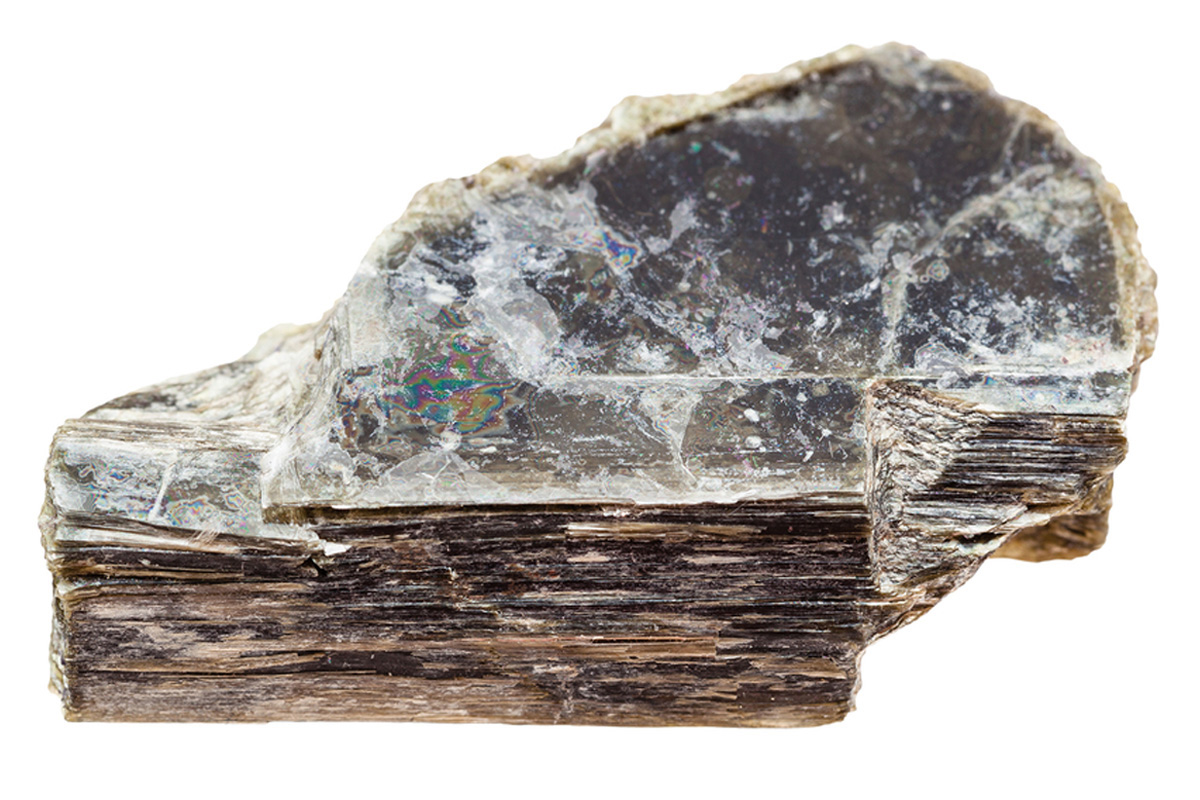
PHYSICAL PROPERTIES
- GROUP Silicates - phyllosilicates
- COMPOSITION KAl2(Si3Al)O10(OH, F)2
- COLOR Colourless, silvery white, light green, pink, brown
- CRYSTALLINE SYSTEM Monoclinic
- CRYSTALLINE HABIT Tabular
- HARDNESS 2.5
- FRACTURE Uneven
- EXFOLIATION Perfect Basal
- GLOSS Vitreous
- STRIP Colorless
- TRANSPARENCY From transparent to translucent
- SPECIFIC WEIGHT 2.8
MINERALOGICAL CHARACTERISTICS
The muscovite is the most abundant mineral of the mica. It is usually colorless, white, silvery, or light brown, and sometimes also greenish, reddish, or light pink. It forms tabular crystals with six faces, and sometimes also lamellar, scales and aggregates in the form of a rosette or star.
It is a hydrated potassium aluminosilicate and is found in igneous, metamorphic or schist rocks. It belongs to the subgroup of phyllosilicates (sheets of tetrahedrons linked together with weak bonds). Its exfoliation is perfect, with separate thin and flexible sheets.
Deposits: Switzerland, Russia, India, Austria, the Czech Republic, Brazil and the United States.
THERAPEUTIC PROPERTIES
The muscovite is considered a mystical stone that favors intuition and psychic vision. It is said that it has the property of reflecting the mirrors that we project outside, that which is difficult for us to recognize as our own, in order to transform and integrate it. It helps open the heart chakra to unconditional love.
Muscovite also represents balance and flexibility. Promotes communication, clarity and self-image.
At a curative level, muscovite is said to help regulate hunger, sleep well, restore the balance of the pancreas and relieve allergies.


